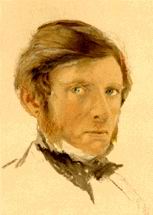 During my daily noodle through the New York Times, I ran across a terrific series in their Opinionator segment. It's called "Line By Line," written by James McMullan, and is "about rediscovering the lost skill and singular pleasure of drawing."
During my daily noodle through the New York Times, I ran across a terrific series in their Opinionator segment. It's called "Line By Line," written by James McMullan, and is "about rediscovering the lost skill and singular pleasure of drawing."
The first installment, "Getting Back to the Phantom Skill" (September 10, 2010) discusses why he embarked on the twelve-part series, and introduces his plan. Scattered throughout the columns are examples from art history that show how skills develop and how artists have used them in the past. The series ended last December with "The Road to the Ten Unknowns," about McMullan's creation of a theater poster.
 This is about the best informal art course I've seen since I came across John Ruskin's Elements of Drawing a few years back, and has reminded me to reorder it (an overly enthusiastic student apparently couldn't resist the temptation and pinched my copy). Ruskin was not only an art critic and supporter of both Turner and the Pre-Raphaelite Brotherhood, but taught drawing at the school he founded at Oxford in 1841.
This is about the best informal art course I've seen since I came across John Ruskin's Elements of Drawing a few years back, and has reminded me to reorder it (an overly enthusiastic student apparently couldn't resist the temptation and pinched my copy). Ruskin was not only an art critic and supporter of both Turner and the Pre-Raphaelite Brotherhood, but taught drawing at the school he founded at Oxford in 1841.
The Ashmolean Museum houses his teaching collection, and has a website devoted to The Elements of Drawing. The materials are vast (they include a video drawing lesson based on Ruskin's principles) and of interest to anybody who wants to learn to draw--or to draw better.
The book costs less than $10 in paperback; the only thing cheaper and that good is the McMullan series.
Image notes: The painting is John Ruskin in His Study at Brantwood, by William Collingwood (1881); the self portrait is watercolor touched with bodycolour over pencil, 1861. Both from Wikimedia Commons.
